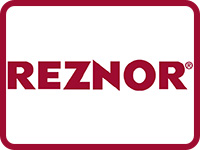How Occupancy Monitoring Can Optimise Facilities Management
 By Bengt Lundberg, CEO of Disruptive Technologies.
By Bengt Lundberg, CEO of Disruptive Technologies.
Facility management is a demanding task, it requires vigilance, careful planning, and data management – all at once. And with the evolving work practices and a growing emphasis on the impact of the created environment – both on the occupants and the global sustainability picture, facilities managers are now facing new challenges. Technology, such as IoT smart sensors, can not only help streamline facilities management procedures but also alleviate the strain on managers as they work to optimise the use and maintenance of physical space.
How Occupancy Monitoring Can Support Facilities Management
Occupancy monitoring is a method of collecting data to determine how a certain area is used. It includes metrics such as desk use and the times when facilities are put under the most strain. One example is to use motion sensors to determine how spaces e.g. a meeting room are actually being used - information which can then be compared with intended usage. With this data, we can build a more efficient, practical, and healthy working environment while also reducing the waste of resources.
IoT smart sensors allow facility managers to keep track of more than just space usage, the wide range of metrics includes, temperature, humidity, CO2, occupant feedback, and proximity. This can not only provide an overview of how workspaces function but also gives facilities managers the ability to automatically control environmental factors, creating the best conditions for occupants while enabling short- and long-term goal achievement in both costs- and resource-cutting. It can also serve as a baseline for adjusting service hours and resource allocation, as well as space utilisation.
Occupancy Data Informing Environmental Control: How It Works
One of the main tasks of facilities management is to ensure ideal conditions within a building. Thanks to their ability to monitor environmental factors, smart sensors make it far simpler to regulate issues such as high CO2 levels which can occur at peak periods. Other factors such as temperature and humidity are also important as they impact not only occupant productivity but health. Smart sensors, therefore, help to provide a safer and more comfortable environment for all.
Informing Cleaning Services With Data Occupancy
Cleaning is crucial, yet time-consuming. Smart sensors can optimise cleaning by identifying which areas are used more often and therefore require more regular cleaning, or cleaning at specific times. Even minor issues can be reported, such as spills, for an instant response.
Why Data Holds The Key To Meeting Sustainability Targets
Facility managers have to also consider environmental concerns and are facing increasing pressure to keep sustainability in mind when optimising their properties - this is another area that IoT sensors can support. During the process of re-evaluating how space is used, facility managers can identify opportunities to maximise efficiency. For example, heating and lighting systems can be turned off when areas are not in use, proximity and motion sensors can be looped into these systems to ensure energy waste is kept to a minimum, while optimised cleaning schedules make it easier to ensure products are not overused when they are not needed, minimising waste products. Data collection can help achieve long-term sustainability goals and help facility managers track progress, improve efficiency and reduce waste.
The Future Of Facilities Management: Technology
A common concern over adding tech to facilities management is the initial investment—is the solution durable and adaptable enough to make it worth it?
Disruptive Technologies' tiny smart sensors are wireless, secure, and robust. Lasting up to 15 years, they can be used to collect data for various purposes to create a safe, innovative, and sustainable space. Importantly, DT’s solutions work straight out of the box and are easy to install, with no wiring and no complex set-up. Pre-paired with the cloud, data is available from the moment they are put in place, a process that takes just a few seconds with their peel-and-stick application. They can also be scaled with equal ease allowing users to create a highly comprehensive network of data and observation monitoring, without impacting the core physical or technical infrastructure of the building.
As facilities management grows in complexity, data collection is increasingly needed to support informed decision-making on space usage, environmental conditions, and even cleaning schedules. Occupancy monitoring facilitates this while also incorporating sustainability goals and cost optimisation as an integral part of the process, rather than an afterthought.
To find out more, please visit https://www.disruptive-technologies.com/



























































